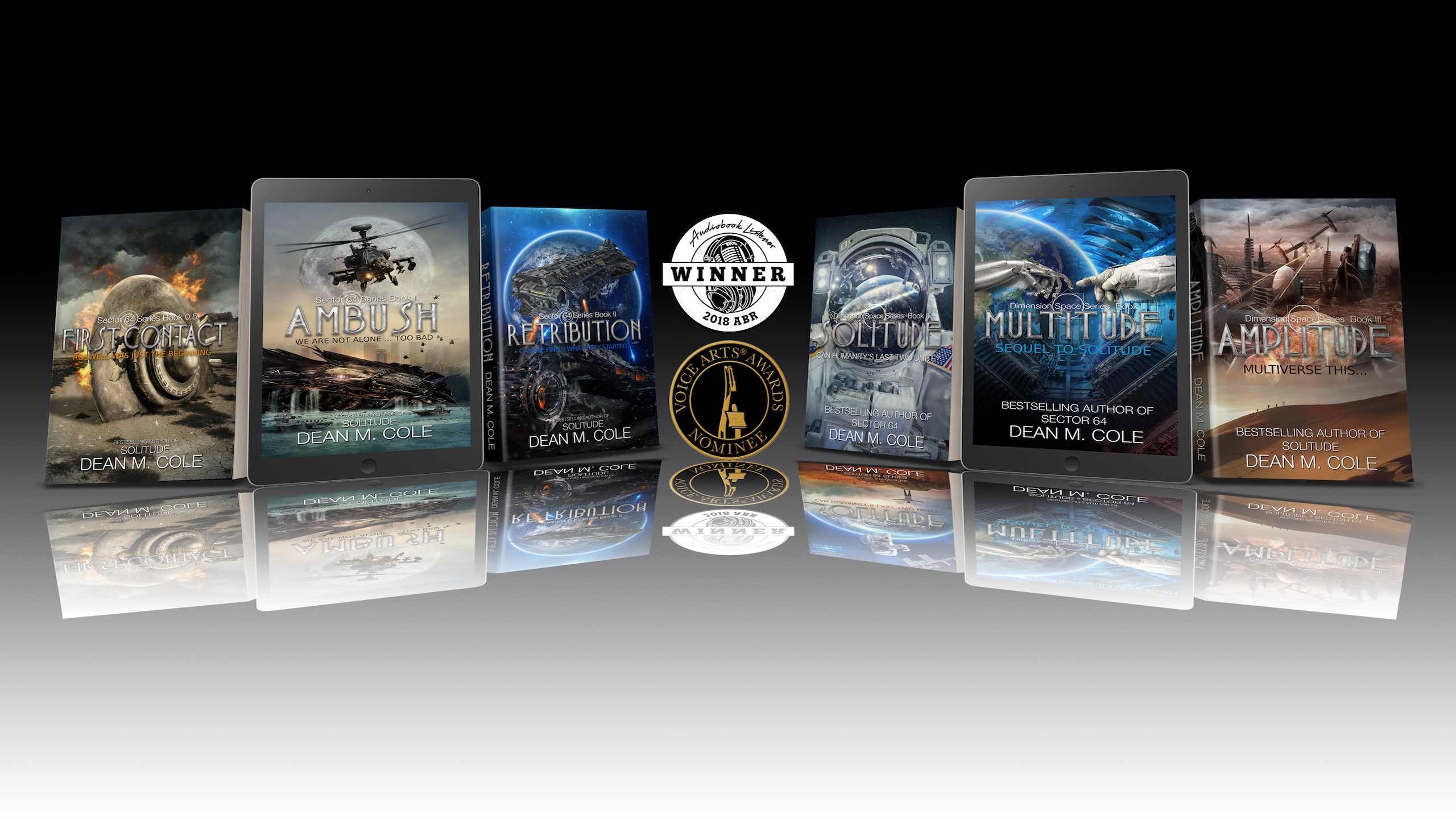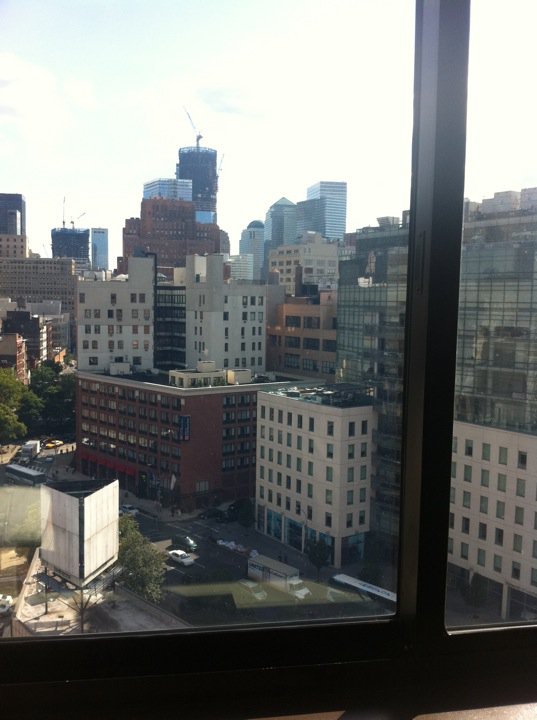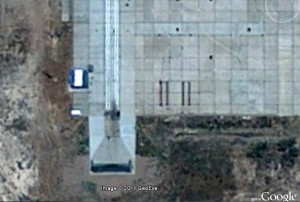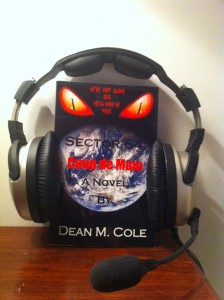A SoHo Grand Experience
Recent travels found me in Morristown, New Jersey, for a week of flight simulator training. While there I always make a point to visit ‘The City.’ With my return flight not scheduled to depart until Saturday afternoon I had a night to burn and the money to light it with. So when I finished my training on Friday I caught a New Jersey Transit train to New York’s Penn Station (for the uninitiated it’s under Madison Square Garden).
Not being the biggest proponent of pre-travel planning I whipped out my iPhone somewhere between Morristown and Manhattan. Using the map feature I searched my favorite little town in America (SoHo) for a good hotel. Finding the SoHo Grand I booked a room.
If you’ve never been to SoHo you’re probably wondering why I’d call a Lower Manhattan neighborhood a ‘little town.’ SoHo is named after Houston Street (pronounced house-ton). SOuth of HOuston, it encompasses a chunk of Manhattan from Houston Street south to Tribeca’s Canal Street (a title generated from the same naming convention: TriBeCa – TRIangle BElow CAnal). While there are plenty of Manhattan skyscrapers they’re best known for their artists’ lofts and galleries, pocket restaurants and basement clubs.
 The gentrified community’s 150-year-old cast iron decorative facades render an old-town-square feel that coupled with its culture gives it a surreal small town air and character.
The gentrified community’s 150-year-old cast iron decorative facades render an old-town-square feel that coupled with its culture gives it a surreal small town air and character.
At Penn Station I work my way to the surface and take the obligatory 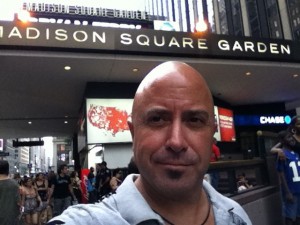 self-portrait under Madison Square Garden’s marquee. Back underground I board the A-Train, the express that takes me straight to SoHo without all the stops (the damn thing bites me later in the story).
self-portrait under Madison Square Garden’s marquee. Back underground I board the A-Train, the express that takes me straight to SoHo without all the stops (the damn thing bites me later in the story).
Emerging from Canal station into the light of day I walk north. Passing Maserati of Manhattan (I want one) and the Tribeca Film Festival headquarters/theater (and now you know how it got its name), I step across Canal into SoHo and start looking for my hotel. After ten seconds I figure out I’m standing right in front of it.
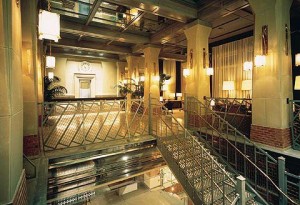 What a cool place! An iconic hotel whose recently redesigned interior pays homage to SoHo’s cast iron lineage. The mix of old and new, iron and glass, dark and light is an eye pleasing work of art.
What a cool place! An iconic hotel whose recently redesigned interior pays homage to SoHo’s cast iron lineage. The mix of old and new, iron and glass, dark and light is an eye pleasing work of art.
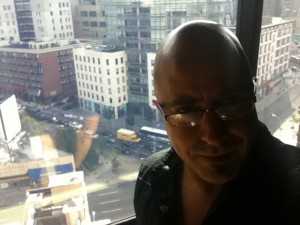 After checking in I work my way up to my room on the fourteenth floor. Opening the door I freeze, Holy shit! What a view! Dropping my bag I walk to the window, unable to believe my luck. Having booked late I never expected to get … this.
After checking in I work my way up to my room on the fourteenth floor. Opening the door I freeze, Holy shit! What a view! Dropping my bag I walk to the window, unable to believe my luck. Having booked late I never expected to get … this.
Facing south my room affords me a view of the new World Trade Center! Not off to the side at an oblique angel. Front and center! After studying the view for a few moments I silently considered what horrors these windows must have witnessed that fateful day in September…
After a power nap (give me a break, I’m not old, I’ve been up since 5:30am and I want to stay up till … almost that late) I clean up and head to the outdoor bar on the Hotel’s south side. It’s a cool late summer afternoon. The sky is blue, there’s a cool breeze that has everyone smiling. The after-work crowd is rolling in to kick off the weekend.
Birds are chirping, leaves are rustling, and the sun chases the cool air deposits from your skin, leaving only goose bumps in its wake. It’s a sensation I’ve always associated with spring’s first warm day and fall’s first cool one. It’s early this year, but then again I’m in New York not Texas … go figure.
I chat with the bartenders. When I’m alone I almost always sit at the bar, it’s a social thing. They’re a wealth of local info and usually don’t mind the company. Plus, not being one that enjoys looking pitiful (even when I might be) I try not to sit solo in a busy social environment. The bartenders come through and suggest a couple of live music venues.
The sun has set. En route to Allen Street I find a little hole-in-the-wall Mom & Pop restaurant; the atmosphere uniquely SoHo, the food excellent. Afterwards I continue north and east. Softly chatting arm-in-arm couples, dashing cabs with flashing blinkers, and residential windows open to let in the breeze and let out the sounds of life dot my path.
At the north end of SoHo I hit Houston Street and proceed east. Ahead I see crowds on a busy, bar and restaurant lined cross street.
I’ve reached my destination.
Stepping into Rockwood Music Hall I’m immersed in incredible sound and a warm atmosphere. There’s a live local band on stage. Playing folksy-bluesy rock the whole place is swaying to their rhythm.
Over the hours a parade of talent crossed the stage, each as good as or better than the last. In the dark, would be smoky (in another era) atmosphere I chat with other patrons, swap stories, laugh, and drink.
2:00am … that nap didn’t help as much as I’d hoped; I’m running out of gas. It might be the culmination of an evening and night’s worth of cocktails (either that or I am getting old … nah). Bidding farewell I head for the exit. I’m at SoHo’s northeast corner and need to get to its southwest corner.
It’s subway time!
Along the way to the station I grab a slice of pizza. Culinary crack, it always taste great after a night of drinking.
2:30am I take a subway west to intercept the A-Train south. At the intersecting station I discover the subways are on a construction schedule. The A-Train either isn’t running or it’s moved to a different track. Paper signs are taped up all over the place. (Paper signs? Can’t New York afford a proper passenger notification system?) I read the one at the A-Train’s normal track. It sends me to another level. I go to that level. Another piece of paper tells me to go back to where I started. After a few more diversions (and firmly aware I look like a lost drunk tourist … screw it) I jump on a train I’m relatively certain is going south to Canal.
It’s not…
I end up completely lost. When I finally realize the train isn’t going the right way I get off in an unknown area of the city. Climbing the stairs it occurs to me I have no idea what kind of neighborhood I might be walking into. Stepping from the stairwell onto the sidewalk I did my best impression of someone who knows where the hell he’s going (show no weakness grasshopper). Turning right I stumbled (figuratively) into a busy bar.
I reasoned, ‘How lost can I be if I can find a place like this?’ Thus temporarily un-lost I settled in for a cocktail to collect myself.
4:00am One or three self-collecting cocktails later I said to myself, ‘Self, let’s give it a go again.’ In search of a cab I wander back into the night. It seems there is only one to be had in the entire city. Unfortunately its occupants (drunken coeds) are busy arguing with the cabbie over a five-dollar overage on their bill.
 I gallantly whip out a five spot and offer it … if they will just get out of the cab … please.
I gallantly whip out a five spot and offer it … if they will just get out of the cab … please.
They decline on a matter of principle, steadfastly refusing to vacate said cab, and suggesting I find another. Through a drunken lisp, one declares, ‘We’re going to sit in this cab until the cabbie (who spoke virtually no English) refunds our five dollars!’
I commented that there wasn’t exactly a plethora of f#*king cabs.
They remained unrepentantly drunk.
4:20am New York births another cab. I jump in. With the still-cackling drunken coeds fading to rear the cab rushs away. Ten minutes later I finally make it back to the SoHo Grand.
4:40am Collapsing into my bed, the Big Apple’s lights staring in on me, I think…
‘What an adventure!’

